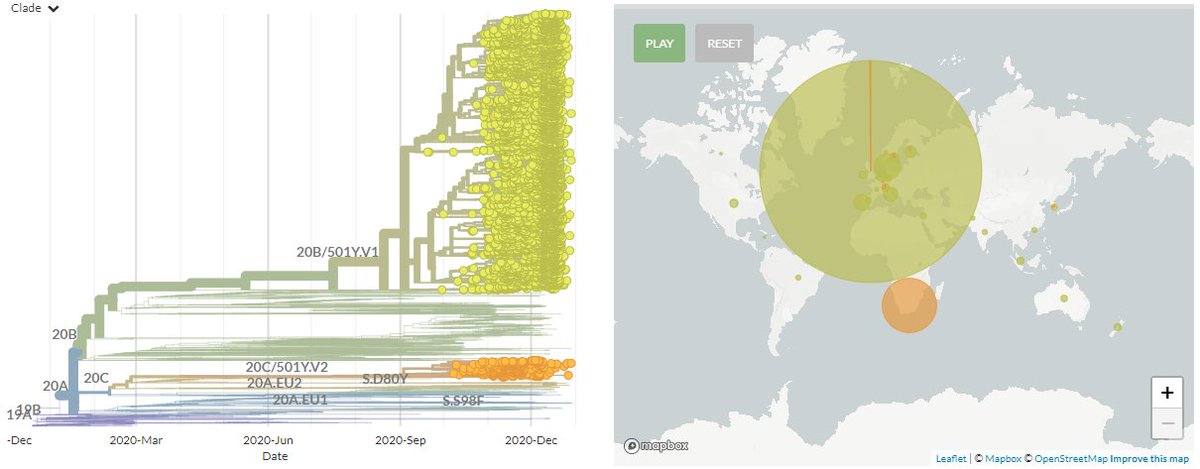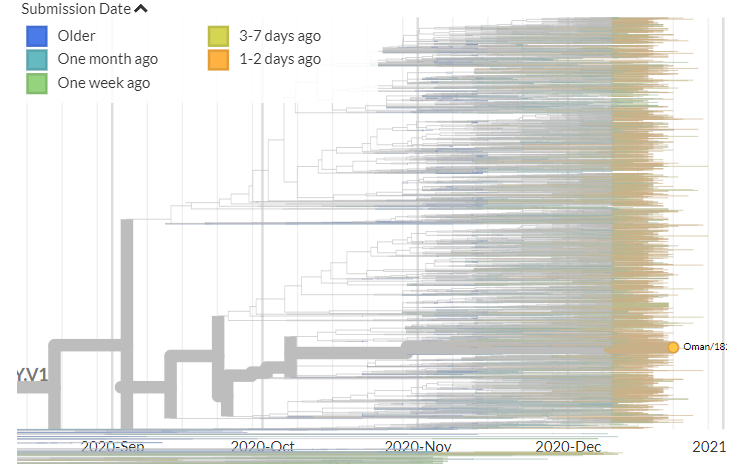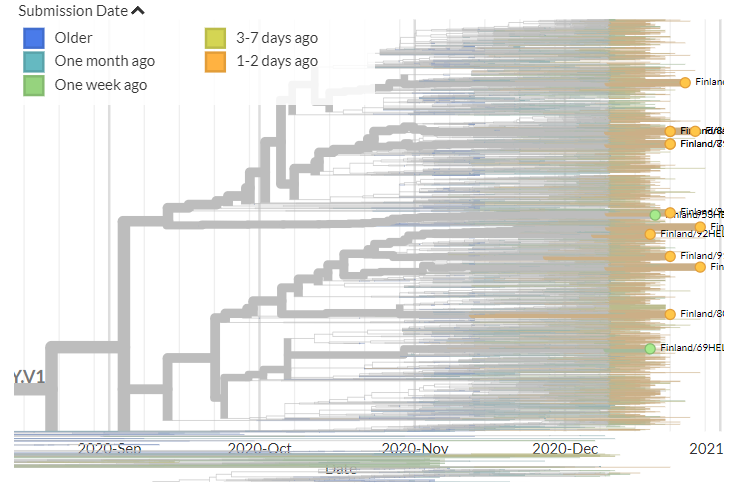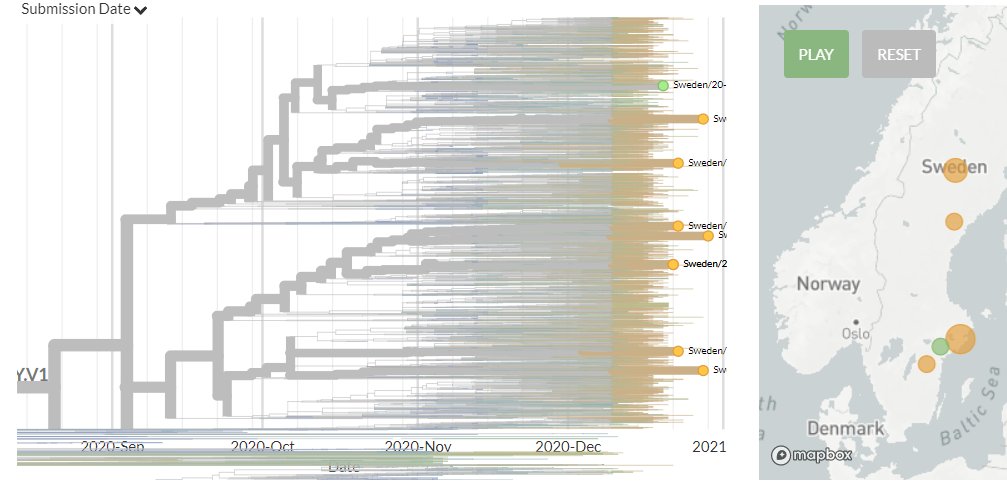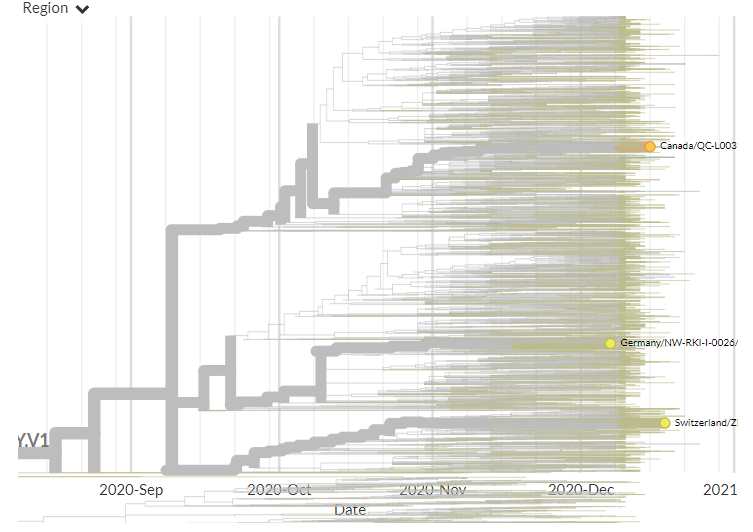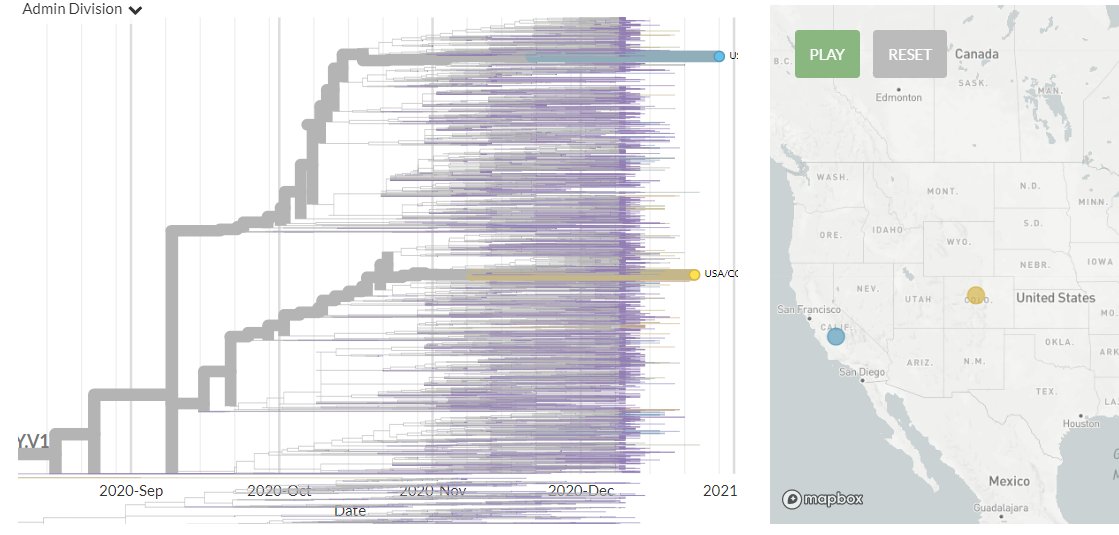There are 161 new, non-UK sequences in 501Y.V1 (B.1.1.7) from the Netherlands, Denmark, Australia, Spain, Norway, Germany, the USA, & Switzerland, and from Turkey and Ecuador for the first time.
2/16
Turkey has 19 sequences in 501Y.V1 for the first time. These indicate many independent introductions, though a few clusters may indicate local transmission, and pairs with common exposure.
3/16
Ecuador has 4 sequences in 501Y.V1 for the first time, which represent 2 separate introductions (pic 2). 3 are identical, and may represent exposure to a common source (pic 3). The connection to the Spanish sequence may be a common source, or onward transmission.
4/16
Denmark has 66 new sequences (orange). A few are independent introductions, though many link with older sequences, showing continuing local transmission.
5/16
Spain has 42 new sequences (orange), including from the island of Mallorca. Many represent new introductions, though some link together & to older sequences (pic 2). Some sequences from Mallorca form tight, distinctive clusters (pic 3).
6/16
The Netherlands has 15 new sequences (orange). All of these are separate introductions, though a few new sequences link together which could be a common exposure source.
7/16
Switzerland has 9 new sequences (yellow). Many are separate introductions. Some sit close to other new sequences & older sequences. In some, geographic distribution implies these are separate introductions (pic 2). Others seem likely to be local transmission (pic 3).
8/16
Australia has 2 new sequences (orange) - they are linked but are a separate introduction, in Victoria.
Norway has 1 new sequence (orange). Though hard to see in the picture, it is a separate introduction & not connected to older sequences.
9/16
Germany has 2 new sequences (orange). Both representing separate introductions (pic 1).
The USA has 1 new sequence, from New Mexico (orange). It is 1 mutation away from older sequences - this could be local transmission or exposure to a common source (pic 2 & 3).
10/16
There are 3 new non-South African sequences in 501Y.V2 from Germany & Australia -- & Norway for the first time.
11/16
There is 1 new sequence each from Australia & Germany. The new Australian seq (yellow, bottom) is a separate introduction. The German seq (orange) is related to older German sequences but doesn't branch directly & is 5 mutations away, so may be exposure to a common source.
12/16
There is 1 new sequence from Norway in 501Y.V2 for the first time.
It is similar to sequences from England and France, which may onward transmission in Europe or a common source outside of Europe.
13/16
Finally, in the S:E484 build, there are 3 new sequences that fall in 20B/S.484K from Denmark, which indicate at least 2 introductions.
14/16
https://t.co/HpPeemTCkW
As usual, the country-plot is also updated. As always - interpret with care! Many countries are preferentially sequencing S-drop-out & S:N501 samples, & so the frequencies represented are often not reflective of real life.
15/16
https://t.co/c7wlQOLRiq
As always, you can read more about all the variants I'm tracking at
https://t.co/wVE7ubYBoy!
16/16
















